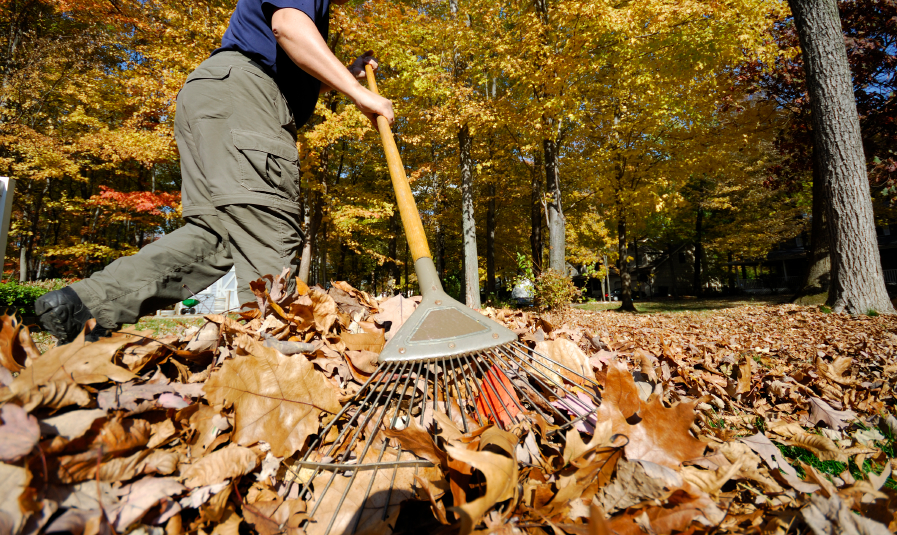Fall is upon us, and that has many homeowners thinking about the condition of their lawns. What to do to prepare them for the upcoming fall and winter months. Preparing your lawn before the harsh winter months will result in a more beautiful lawn come springtime.
There are several things you can do to prepare your lawn for fall. Some of these include applying weed control, fertilizing, and aerating your lawn. Aerating your lawn will allow water, oxygen, and nutrients to reach deep down into the root system, and doing this will allow your lawn to grow stronger.
According to Lawncare.org taking the time to care for your lawn will give it a better chance of being healthier come springtime.
Preparing Your Lawn
Mow Your Lawn
Continue to mow your lawn throughout the fall season. Many homeowners think that it isn’t as important to keep the lawn mowed during the fall, but that just isn’t true. You should continue to mow the lawn as needed, and for the last two cuts of the season, lower your blade setting. This allows more sunlight to reach the crown of the grass, allowing for less leaf browning during the winter months.
Rake Leaves
It’s important to remove the leaves that have fallen from your lawn as early as possible. Many people like to wait until all of the leaves have fallen, but doing so will allow the leaves to get wet from dew and rain. When the leaves get wet, they’ll stick together and suffocate the grass.
If you don’t like raking, consider purchasing a lawnmower that provides a bagging or vacuum attachment.
Fertilize
If you can only fertilize your lawn once per year, the best time to do it is in the fall months. This is due to the grass leaves growing at a slower pace. Applying fertilizer during the fall season will provide your lawn with important nutrients to aid in stronger and healthier growth for spring.
Apply your fertilizer mid-season, and be sure to apply it evenly. Consider using a spreader to get the best coverage.
Fill in Bare Spots
Filling in any bare spots in your lawn is best done during the fall months. Using a rake, scratch the soil in the bare spot loose and apply a thick layer of grass seed, then water periodically forthe next couple of weeks.
Weed Control
Fall is the time to battle those darned dandelions that keep invading your lawn. You can beat them by applying a weed killer. Most manufacturers will recommend applying it during the early season and no later than the late fall.
The Lawn Institute states that a dense, healthy lawn will prevent runoff and absorb rainfall six times more effectively than that of a wheat field, and four times better than a hay field. So take the steps now to improve your lawn for a beautiful, healthy lawn to bloom in the spring.
Other Fall Prep Tips
- Drain your watering hose: If you don’t want to waste money purchasing a new hose in the spring, be sure to drain your hose and use an air compressor to get any remaining water removed. Don’t have an air compressor? Stretch the hose out on a sloping yard or driveway.
- Unearth Your Bulbs: If you live in snowbound areas, you’ll want to remove your bulbs from the ground and plant them in containers. Keep the containers in a cool basement or attached garage and water about once per month. Then bring the containers out in the spring and replant them in your garden.
- Stop the burrowing: Lawns can be damaged by gophers, moles, and other burrowing animals. The best course of action is to remove the food that they live for, which is grubs and other insects.
- Dethatch your lawn: Thatch naturally occurs when a layer of living and dead grass stems, roots, and shoots form at the base of the blades caused by over-fertilizing, watering, and mowing when the grass is too high. An acceptable thatch layer will contain less than a half inch of thatch. You should detach anything over one inch. To help prevent thatch, consider using a mulching mower.
Dethatching
You can dethatch your lawn using a rake specifically made for dethatching. For bigger jobs, consider renting a dethatcher.
- Before you begin, mow your lawn to half its normal height.
- Using the rake, dig into the thatch and pull upwards to loosen and remove it.
- After you dethatch your lawn, rake up the loosened thatch and dispose of it.
- Seed any bare spots caused by dethatching.
- Fertilize when finished and keep it watered to help the grass recover from the process.
Ben Buys Indy Houses has prepared five budget-friendly projects to amp up the curb appeal of your home. And consider watching this video to go over everything you need to do to prepare your lawn for the coming fall.



